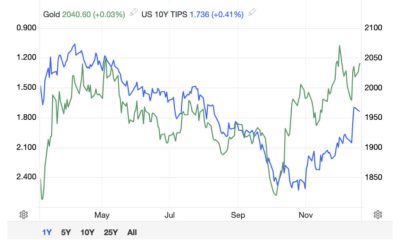Uncategorized
Australia’s domestic vanadium investments to support renewable energy battery sector
Vanadium is fast becoming an important commodity for Australia’s green manufacturing objectives and its vision of a sustainable economy. The metal has…


Vanadium is fast becoming an important commodity for Australia’s green manufacturing objectives and its vision of a sustainable economy.
The metal has a silver-grey colour and is prized for its ductile properties, anti-corrosive nature, and lightweight but high-strength alloys.
The Federal government has invested AU$ 49 mn into the Australian Vanadium Project, operated by Australian Vanadium Ltd (ASX: AVL), to develop a fully integrated mining project to supply the green steel industry and downstream battery markets.
Applications include its use in aircraft frames, engines, steel production and most recently, in vanadium redox flow batteries (VRFB) to create new-age renewable energy storage solutions. Flow batteries use the ion exchange between two liquids to generate power.
The grant is being made under the Modern Manufacturing Initiative, which is central to Australia’s strategy to scale up the sector, improve global competitiveness and create domestic employment opportunities.
The first instalment of approximately AU$10 mn will be used for the construction and establishment of a green-hydrogen-powered high-purity vanadium processing facility and will be undertaken in conjunction with Bryah Resources Limited (ASX: BYH).
This collaboration shall complement the project with capabilities to develop potential cobalt, nickel, copper, and gold deposits.
Global picture and demand projections
The government’s decision to push vanadium production, processing and electrolyte manufacture is a response to a combination of intensifying uncertainties in the global supply chain and significantly higher projected demand for the metal.
China and Russia are the two largest producers with outputs of 70,000 MT and 17,000 MT per annum, respectively.
The bulk of Chinese production is funnelled into its giant domestic steel industry.
Currently, South Africa and Brazil occupy the third and fourth spots with production of 9,100 MT and 6,200 MT in 2022, respectively.
At peak, the Australian project is designed to produce 11,200 tonnes per annum of vanadium pentoxide.
A 2023 report projects that the US$ 42 bn industry will grow to US$81.8 Billion by 2030 at a CAGR of 8.5%.
Demand from iron and steel manufacturing is projected to record a growth of 8.9% CAGR, while the energy storage segment is expected to increase at 9.6% CAGR until the end of the decade.

INN reports that 90 per cent of this demand driven by VRFBs by 2032.
Regarding the green credentials of the metal and its role in CO2 reduction, Ernest Cleave, CFO of Largo, stated,
If you were not to use vanadium in steel making, it would be putting another 140 million tons of CO2 in the atmosphere… that’s the same as the equivalent output of 260 million trees…
The post Australia’s domestic vanadium investments to support renewable energy battery sector appeared first on Invezz.
















